Презентація на тему «Features of Ukrainian cuisine»
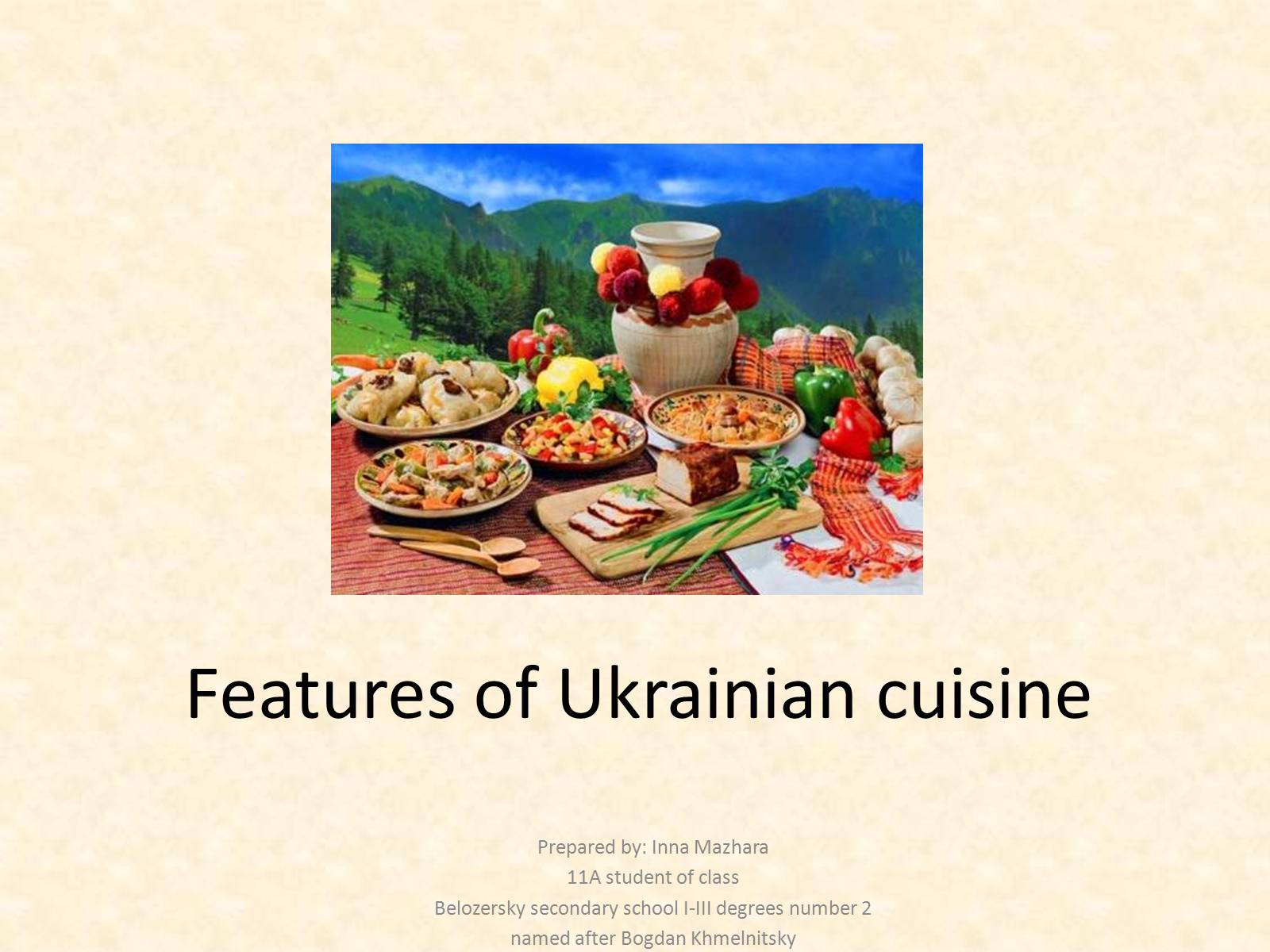
Features of Ukrainian cuisine
Prepared by: Inna Mazhara
11A student of class
Belozersky secondary school I-III degrees number 2
named after Bogdan Khmelnitsky
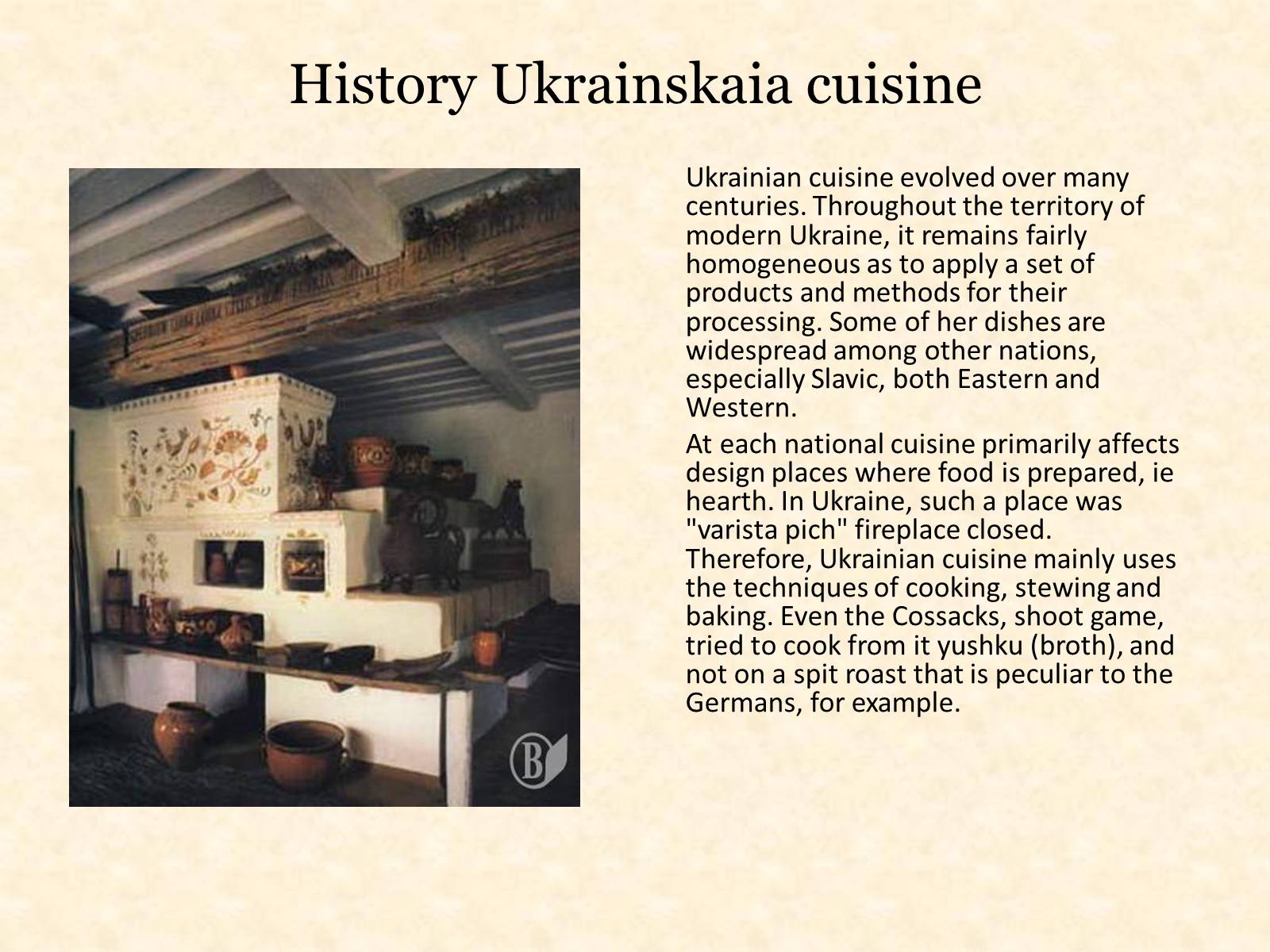
History Ukrainskaia cuisine
Ukrainian cuisine evolved over many centuries. Throughout the territory of modern Ukraine, it remains fairly homogeneous as to apply a set of products and methods for their processing. Some of her dishes are widespread among other nations, especially Slavic, both Eastern and Western.
At each national cuisine primarily affects design places where food is prepared, ie hearth. In Ukraine, such a place was "varista pіch" fireplace closed. Therefore, Ukrainian cuisine mainly uses the techniques of cooking, stewing and baking. Even the Cossacks, shoot game, tried to cook from it yushku (broth), and not on a spit roast that is peculiar to the Germans, for example.
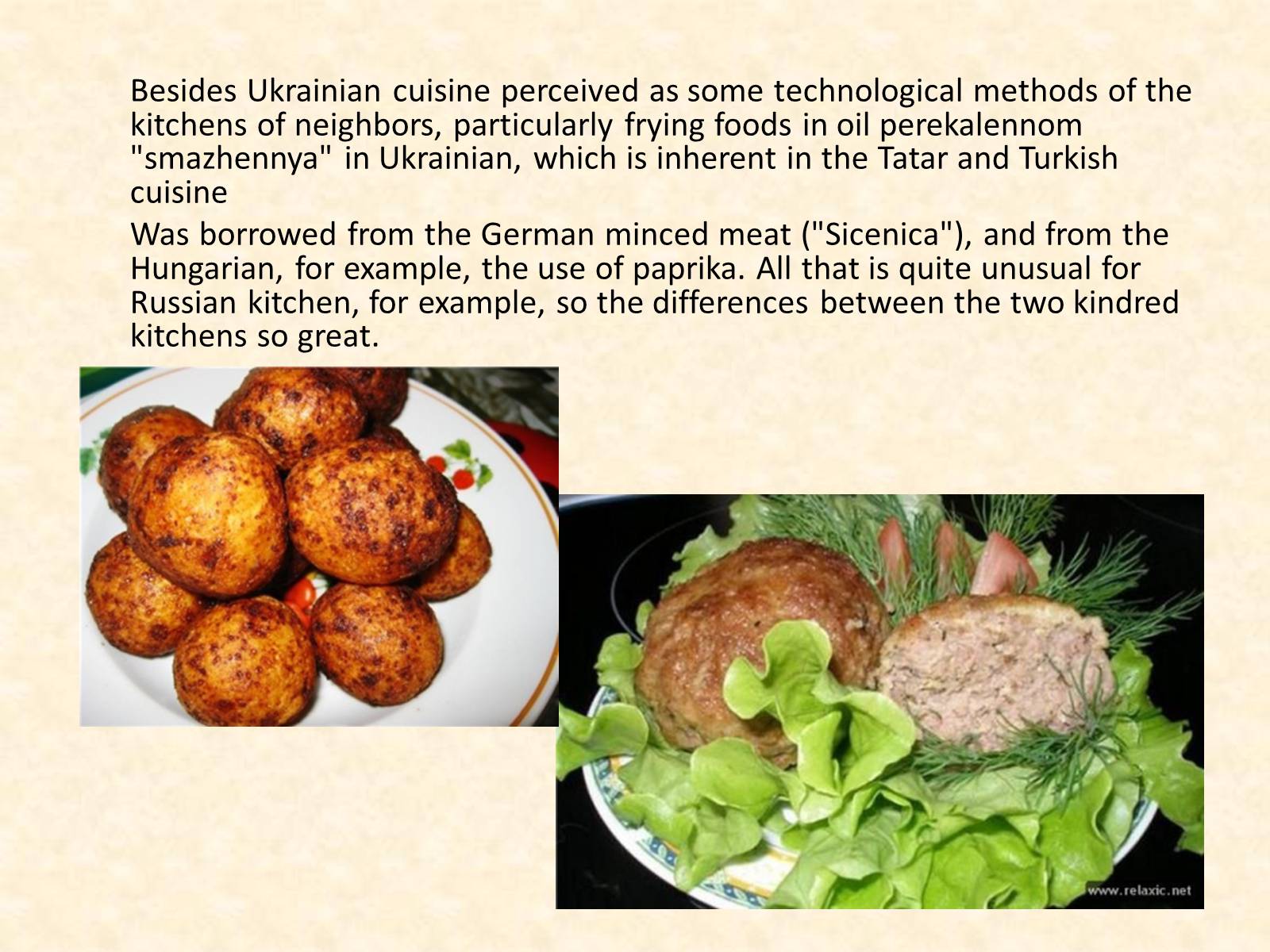
Besides Ukrainian cuisine perceived as some technological methods of the kitchens of neighbors, particularly frying foods in oil perekalennom "smazhennya" in Ukrainian, which is inherent in the Tatar and Turkish cuisine
Was borrowed from the German minced meat ("Sicenica"), and from the Hungarian, for example, the use of paprika. All that is quite unusual for Russian kitchen, for example, so the differences between the two kindred kitchens so great.
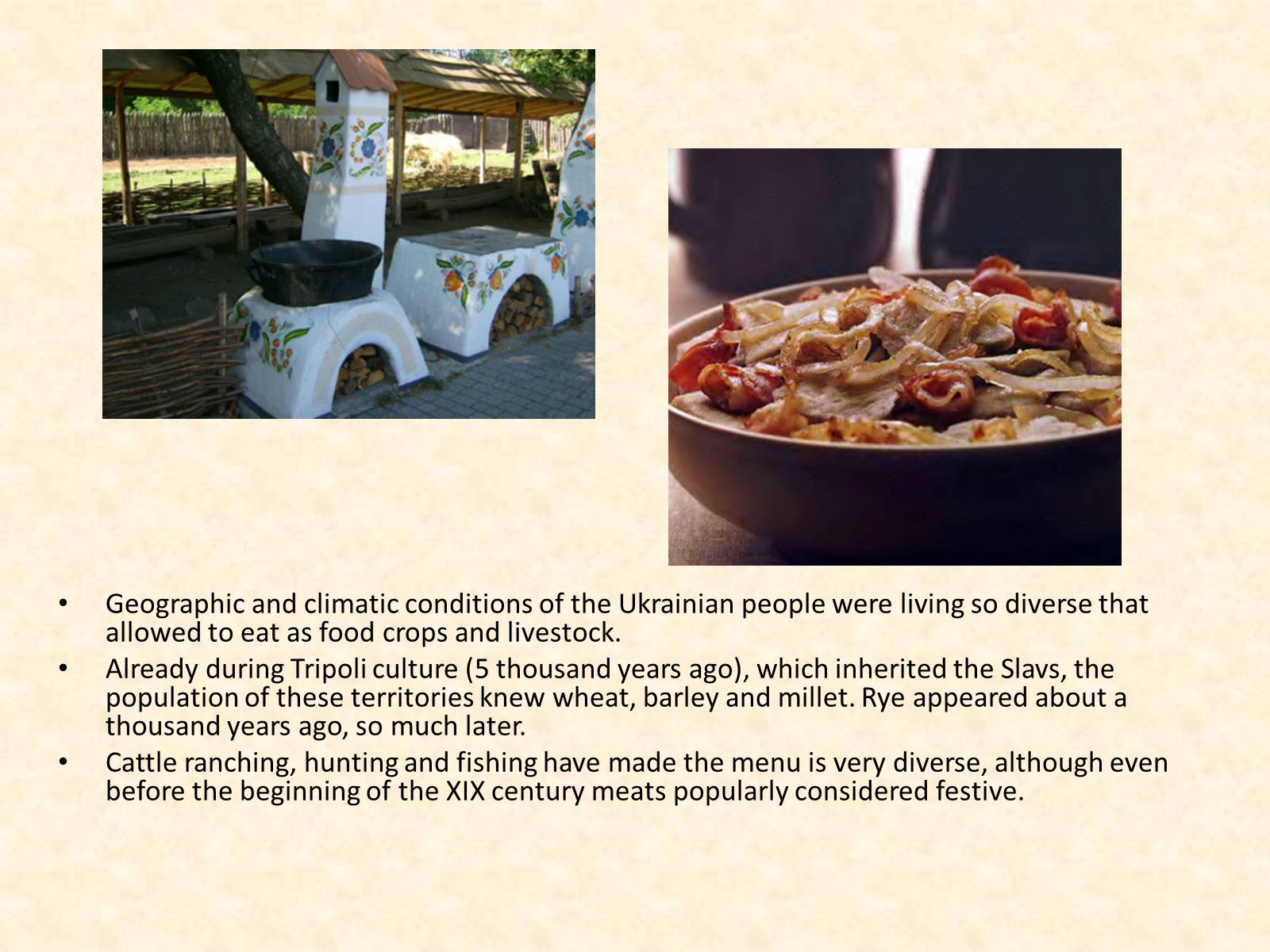
Geographic and climatic conditions of the Ukrainian people were living so diverse that allowed to eat as food crops and livestock.
Already during Tripoli culture (5 thousand years ago), which inherited the Slavs, the population of these territories knew wheat, barley and millet. Rye appeared about a thousand years ago, so much later.
Cattle ranching, hunting and fishing have made the menu is very diverse, although even before the beginning of the XIX century meats popularly considered festive.
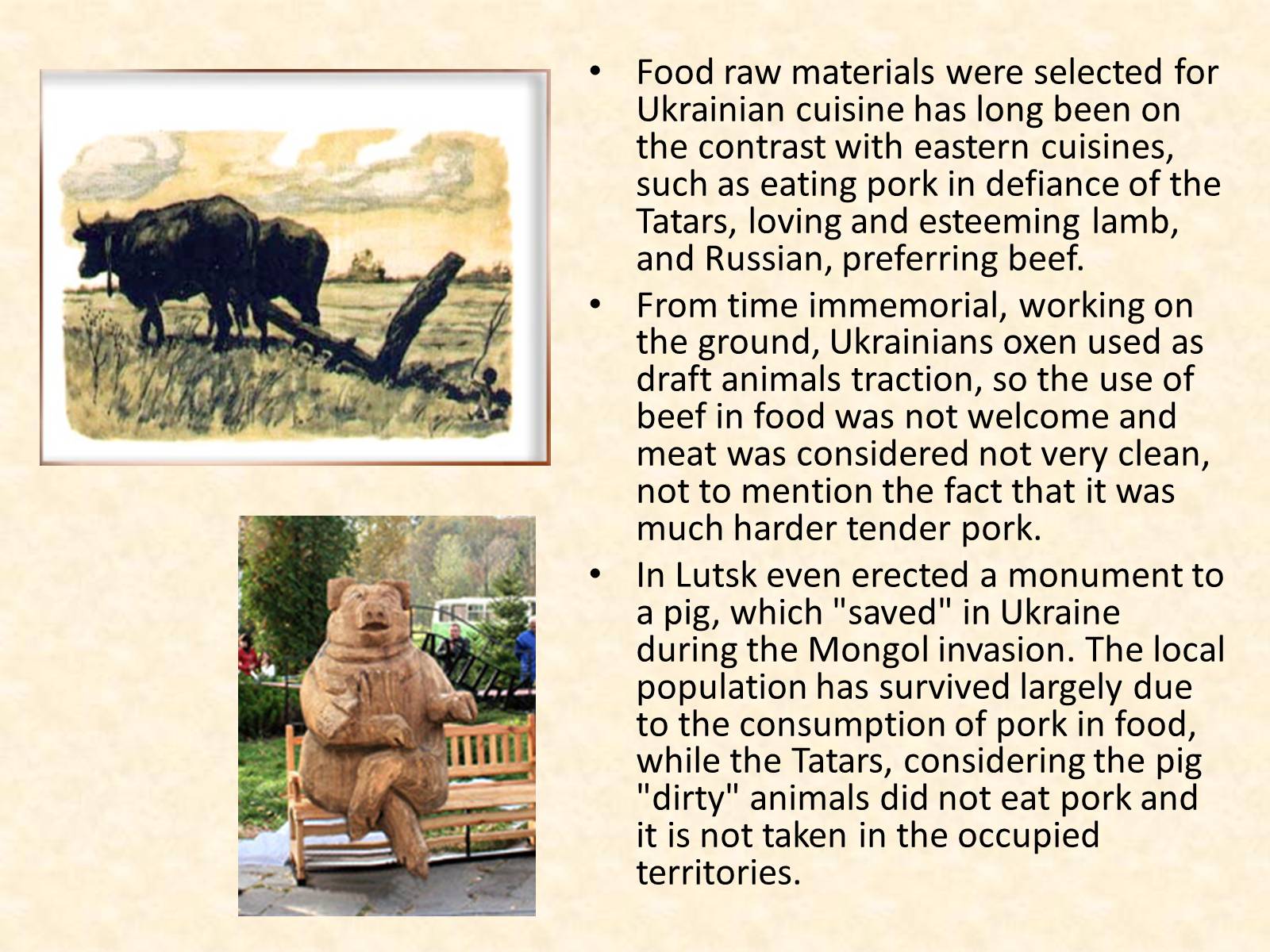
Food raw materials were selected for Ukrainian cuisine has long been on the contrast with eastern cuisines, such as eating pork in defiance of the Tatars, loving and esteeming lamb, and Russian, preferring beef.
From time immemorial, working on the ground, Ukrainians oxen used as draft animals traction, so the use of beef in food was not welcome and meat was considered not very clean, not to mention the fact that it was much harder tender pork.
In Lutsk even erected a monument to a pig, which "saved" in Ukraine during the Mongol invasion. The local population has survived largely due to the consumption of pork in food, while the Tatars, considering the pig "dirty" animals did not eat pork and it is not taken in the occupied territories.
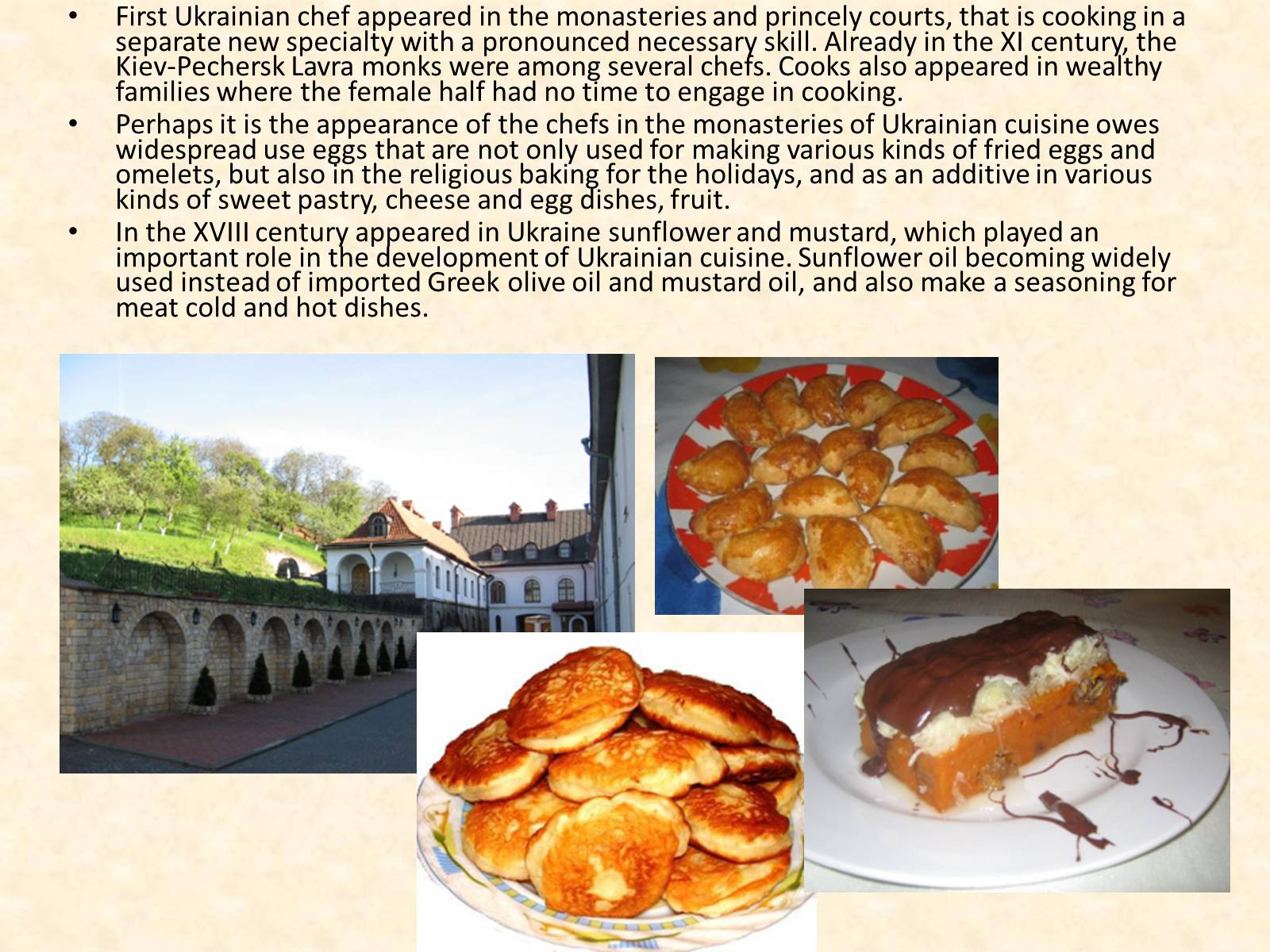
First Ukrainian chef appeared in the monasteries and princely courts, that is cooking in a separate new specialty with a pronounced necessary skill. Already in the XI century, the Kiev-Pechersk Lavra monks were among several chefs. Cooks also appeared in wealthy families where the female half had no time to engage in cooking.
Perhaps it is the appearance of the chefs in the monasteries of Ukrainian cuisine owes widespread use eggs that are not only used for making various kinds of fried eggs and omelets, but also in the religious baking for the holidays, and as an additive in various kinds of sweet pastry, cheese and egg dishes, fruit.
In the XVIII century appeared in Ukraine sunflower and mustard, which played an important role in the development of Ukrainian cuisine. Sunflower oil becoming widely used instead of imported Greek olive oil and mustard oil, and also make a seasoning for meat cold and hot dishes.
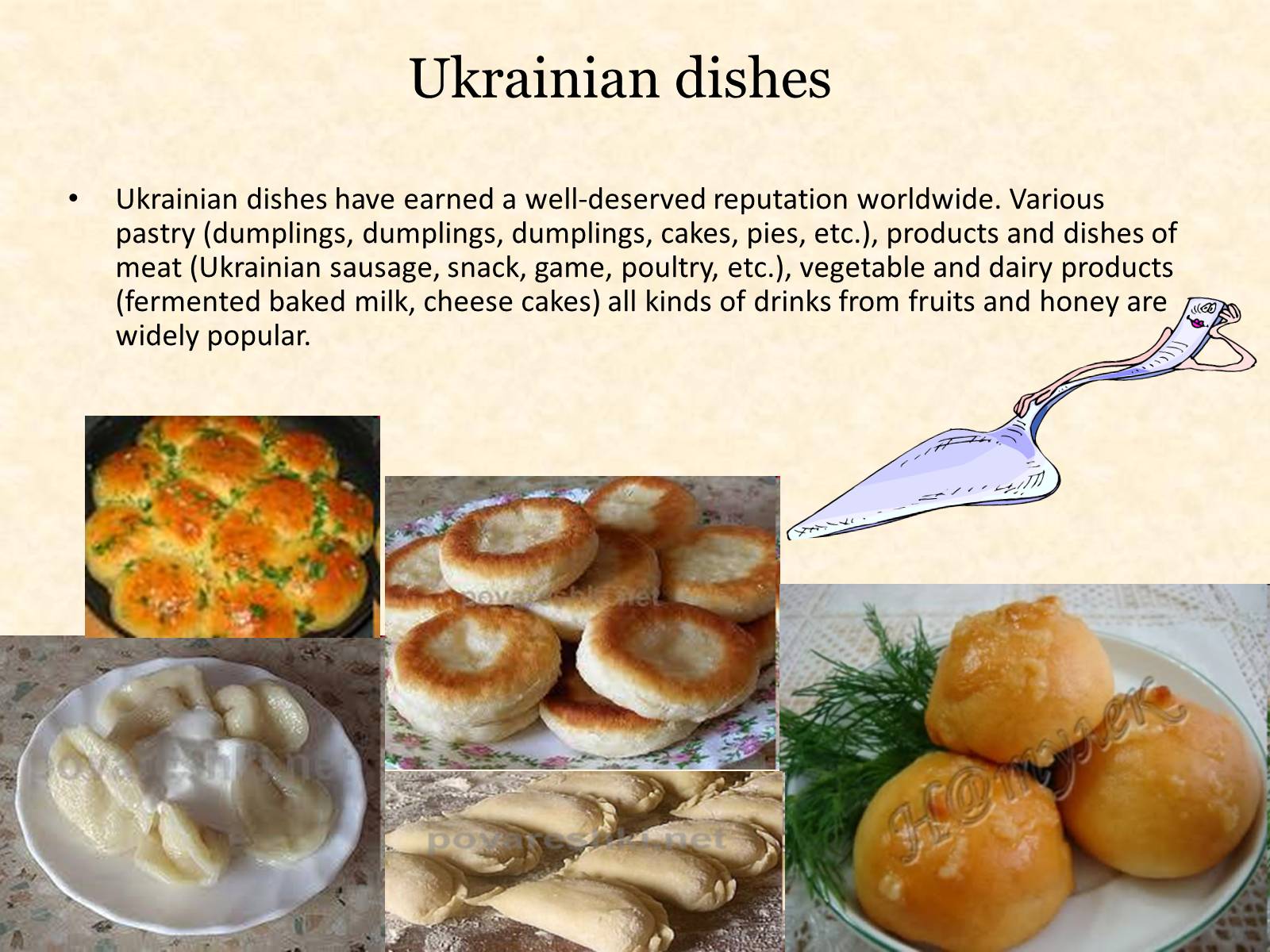
Ukrainian dishes have earned a well-deserved reputation worldwide. Various pastry (dumplings, dumplings, dumplings, cakes, pies, etc.), products and dishes of meat (Ukrainian sausage, snack, game, poultry, etc.), vegetable and dairy products (fermented baked milk, cheese cakes) all kinds of drinks from fruits and honey are widely popular.
Ukrainian dishes
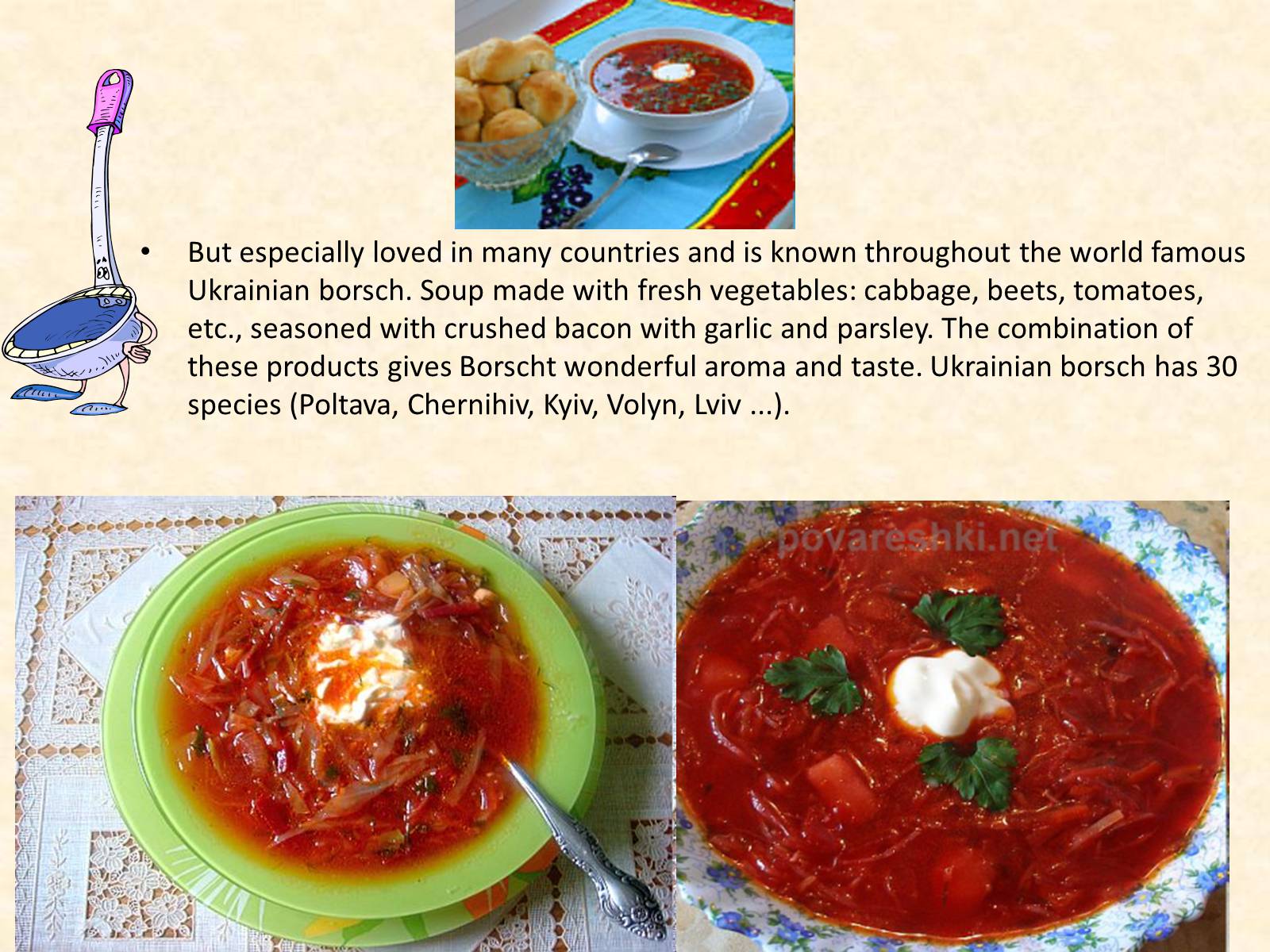
But especially loved in many countries and is known throughout the world famous Ukrainian borsch. Soup made with fresh vegetables: cabbage, beets, tomatoes, etc., seasoned with crushed bacon with garlic and parsley. The combination of these products gives Borscht wonderful aroma and taste. Ukrainian borsch has 30 species (Poltava, Chernihiv, Kyiv, Volyn, Lviv ...).
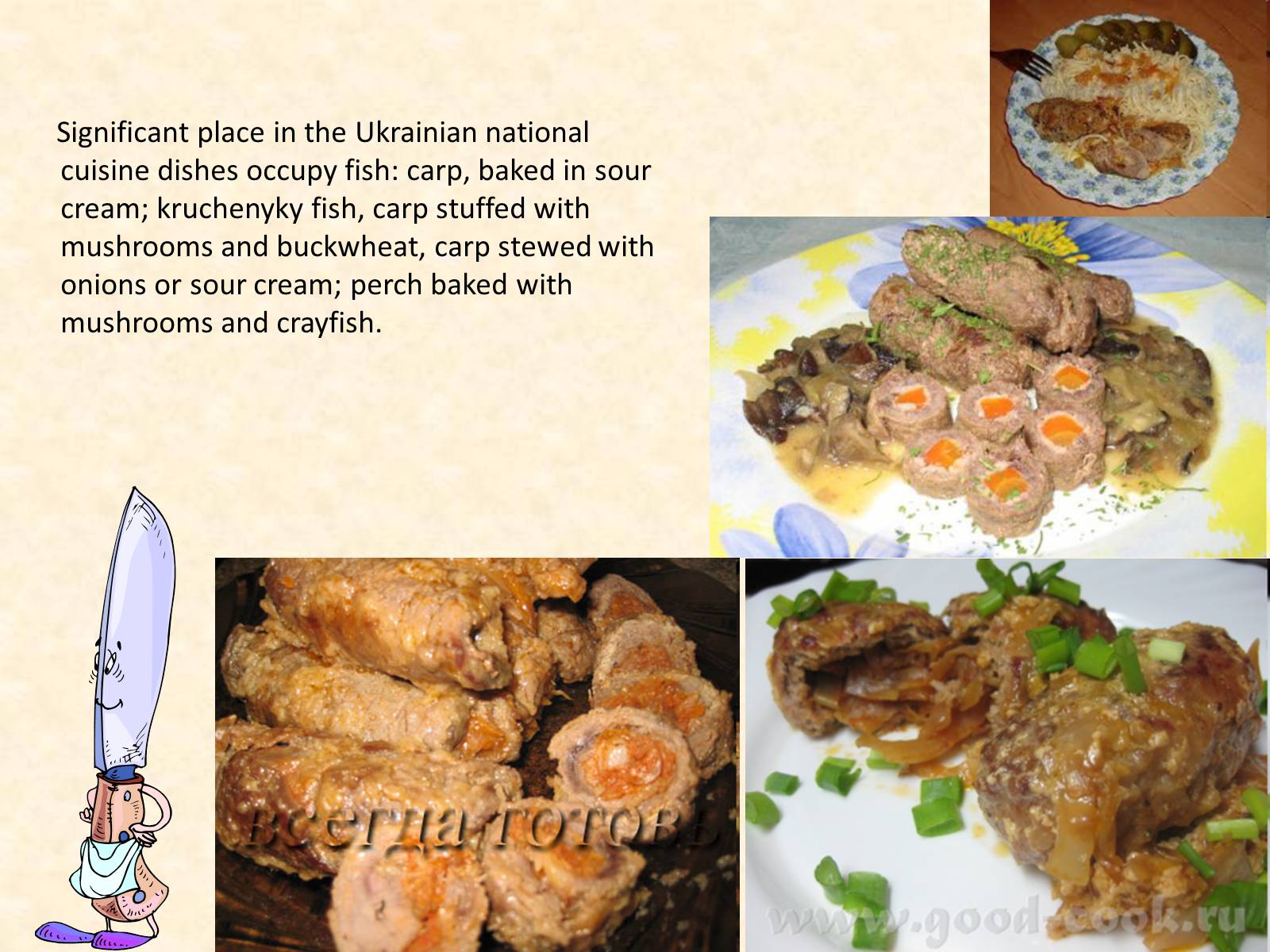
Significant place in the Ukrainian national cuisine dishes occupy fish: carp, baked in sour cream; kruchenyky fish, carp stuffed with mushrooms and buckwheat, carp stewed with onions or sour cream; perch baked with mushrooms and crayfish.
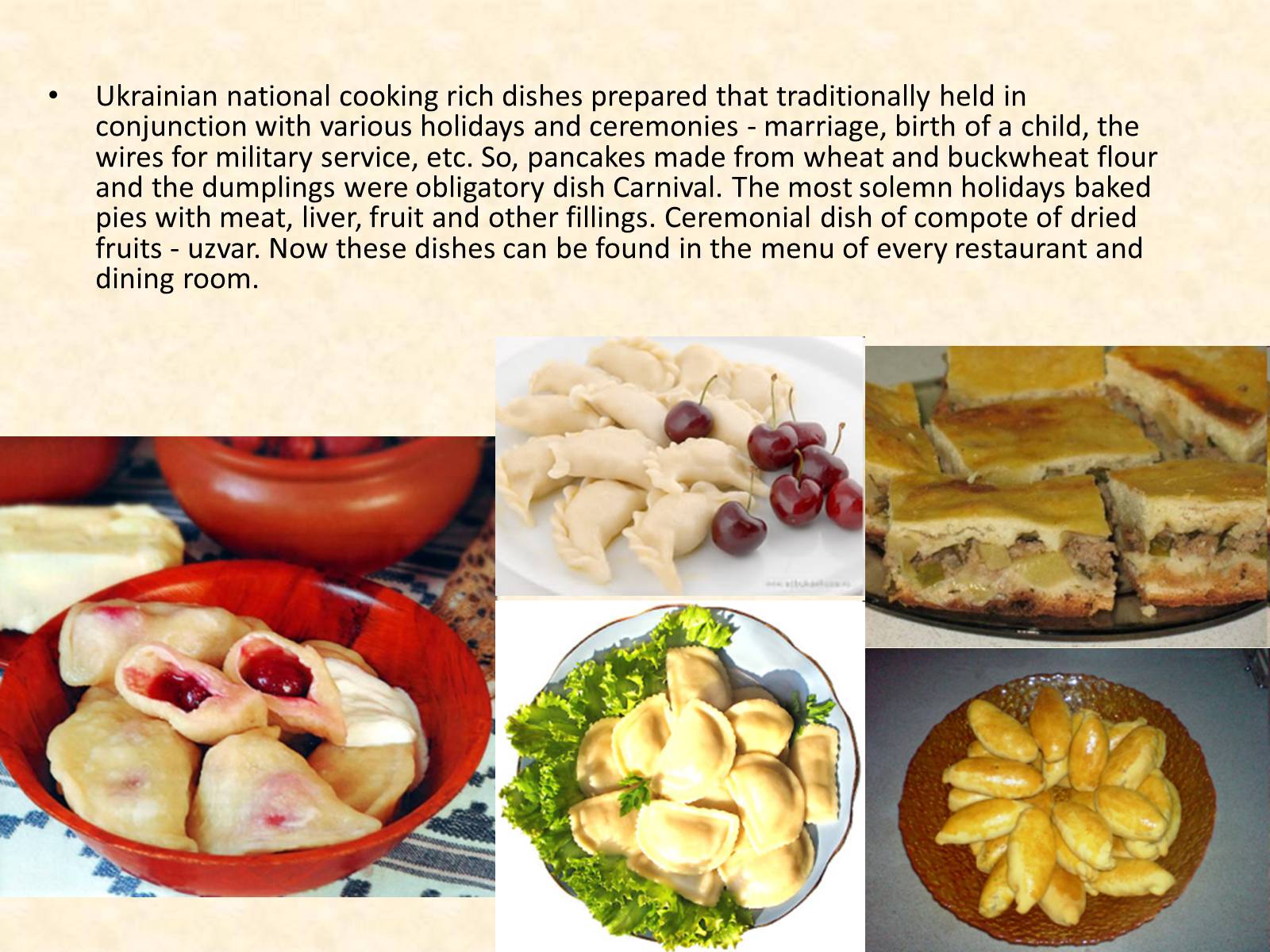
Ukrainian national cooking rich dishes prepared that traditionally held in conjunction with various holidays and ceremonies - marriage, birth of a child, the wires for military service, etc. So, pancakes made from wheat and buckwheat flour and the dumplings were obligatory dish Carnival. The most solemn holidays baked pies with meat, liver, fruit and other fillings. Ceremonial dish of compote of dried fruits - uzvar. Now these dishes can be found in the menu of every restaurant and dining room.
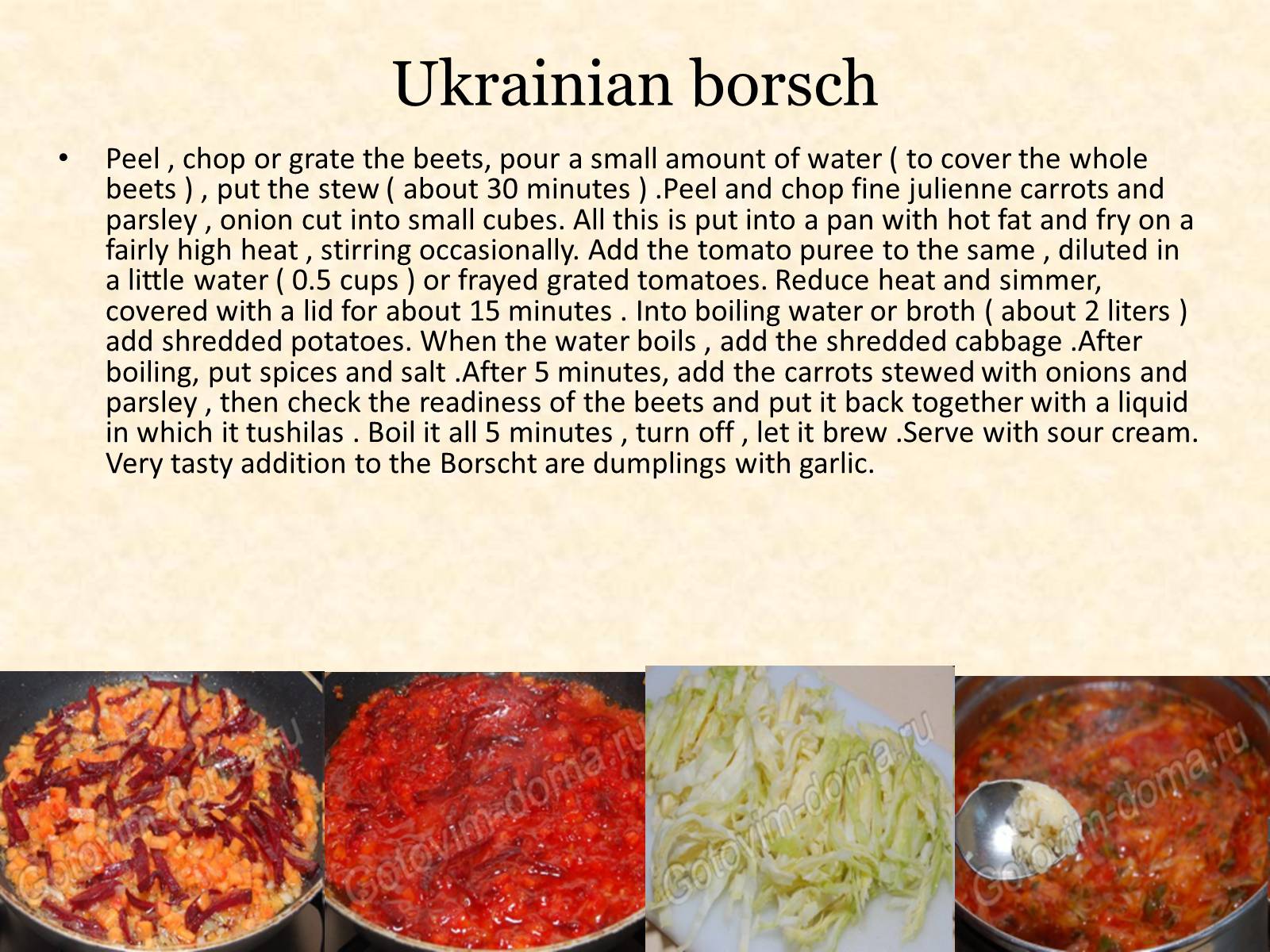
Ukrainian borsch
Peel , chop or grate the beets, pour a small amount of water ( to cover the whole beets ) , put the stew ( about 30 minutes ) .Peel and chop fine julienne carrots and parsley , onion cut into small cubes. All this is put into a pan with hot fat and fry on a fairly high heat , stirring occasionally. Add the tomato puree to the same , diluted in a little water ( 0.5 cups ) or frayed grated tomatoes. Reduce heat and simmer, covered with a lid for about 15 minutes . Into boiling water or broth ( about 2 liters ) add shredded potatoes. When the water boils , add the shredded cabbage .After boiling, put spices and salt .After 5 minutes, add the carrots stewed with onions and parsley , then check the readiness of the beets and put it back together with a liquid in which it tushilas . Boil it all 5 minutes , turn off , let it brew .Serve with sour cream. Very tasty addition to the Borscht are dumplings with garlic.
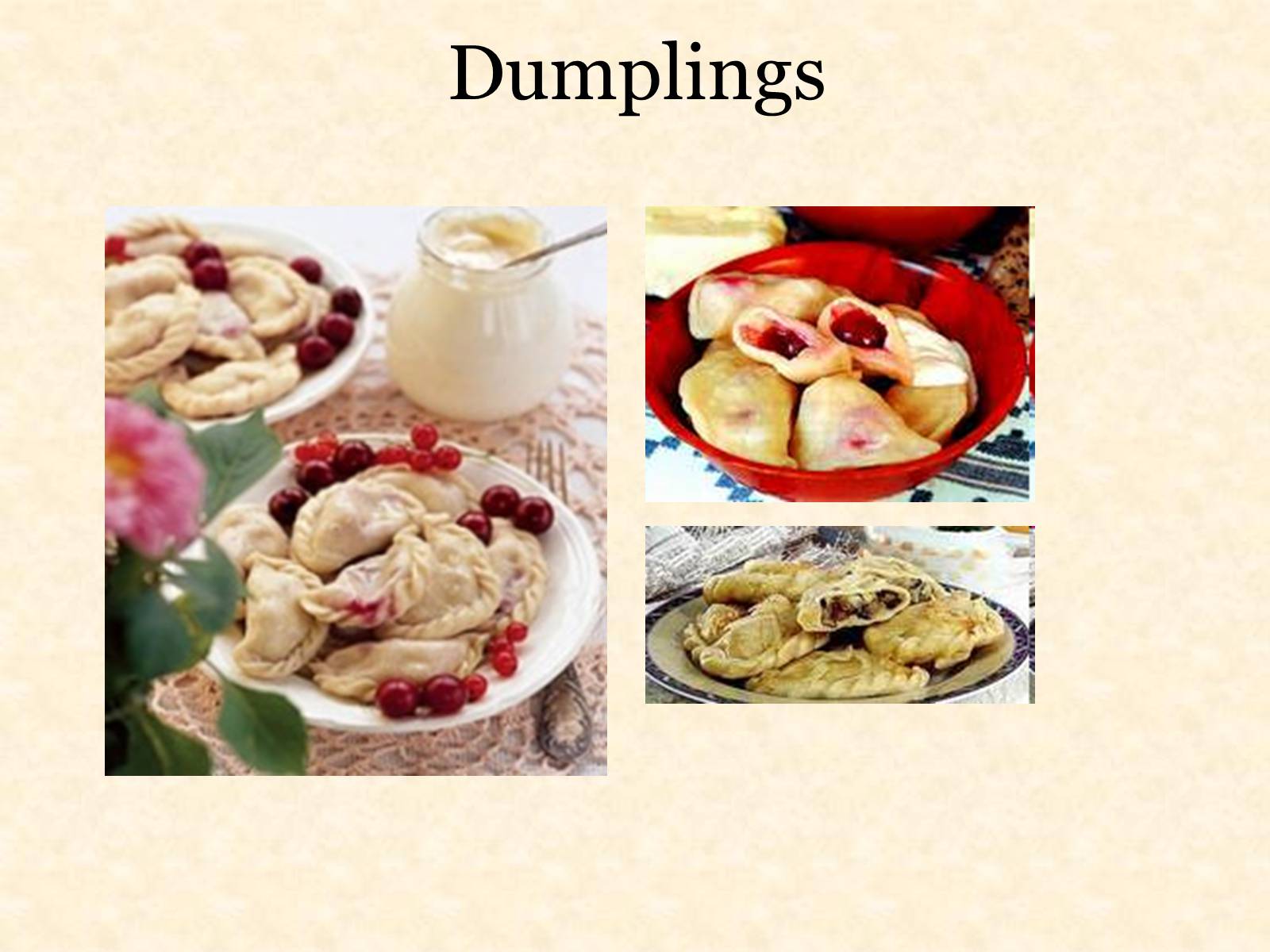
Dumplings
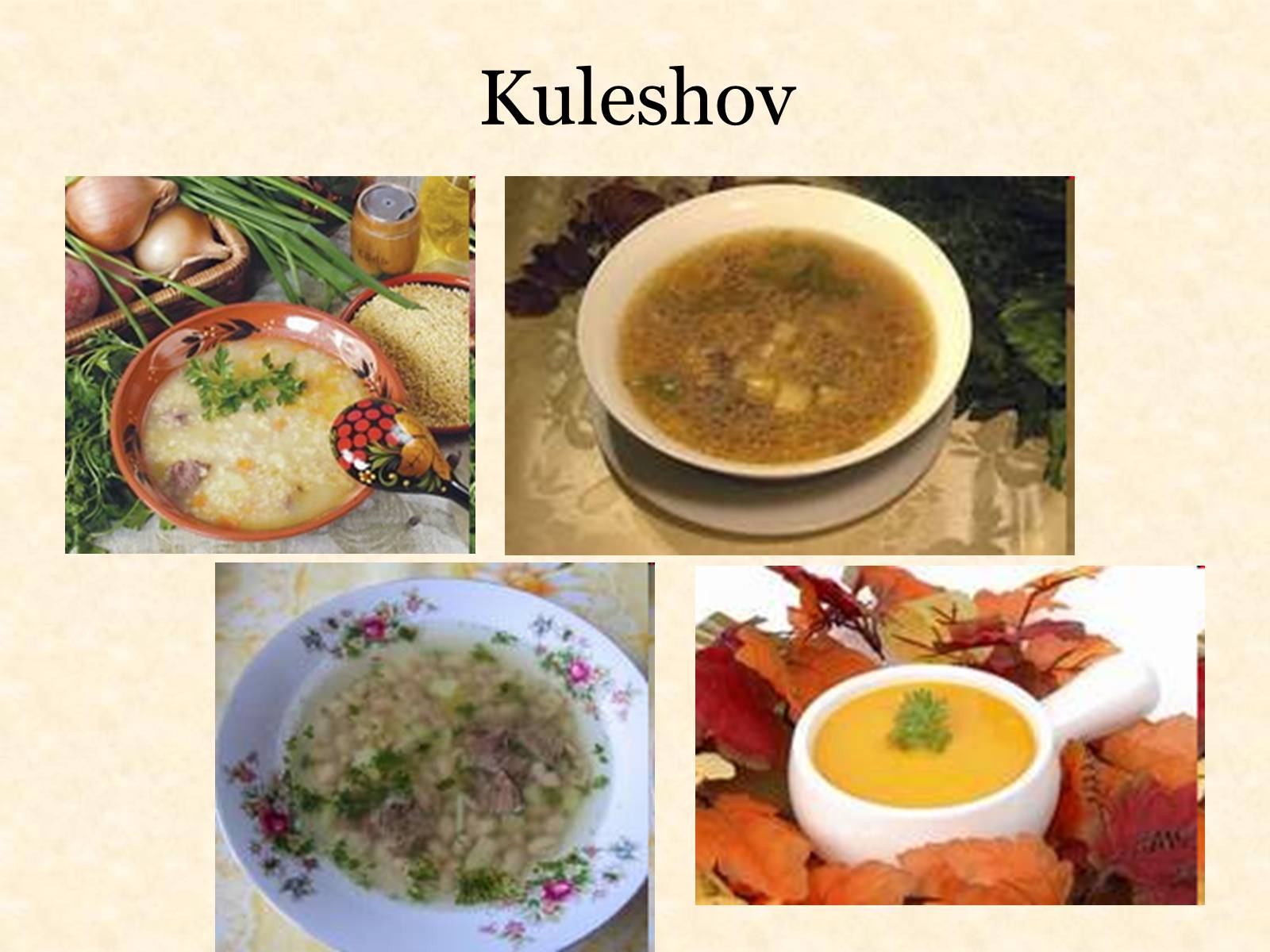
Kuleshov
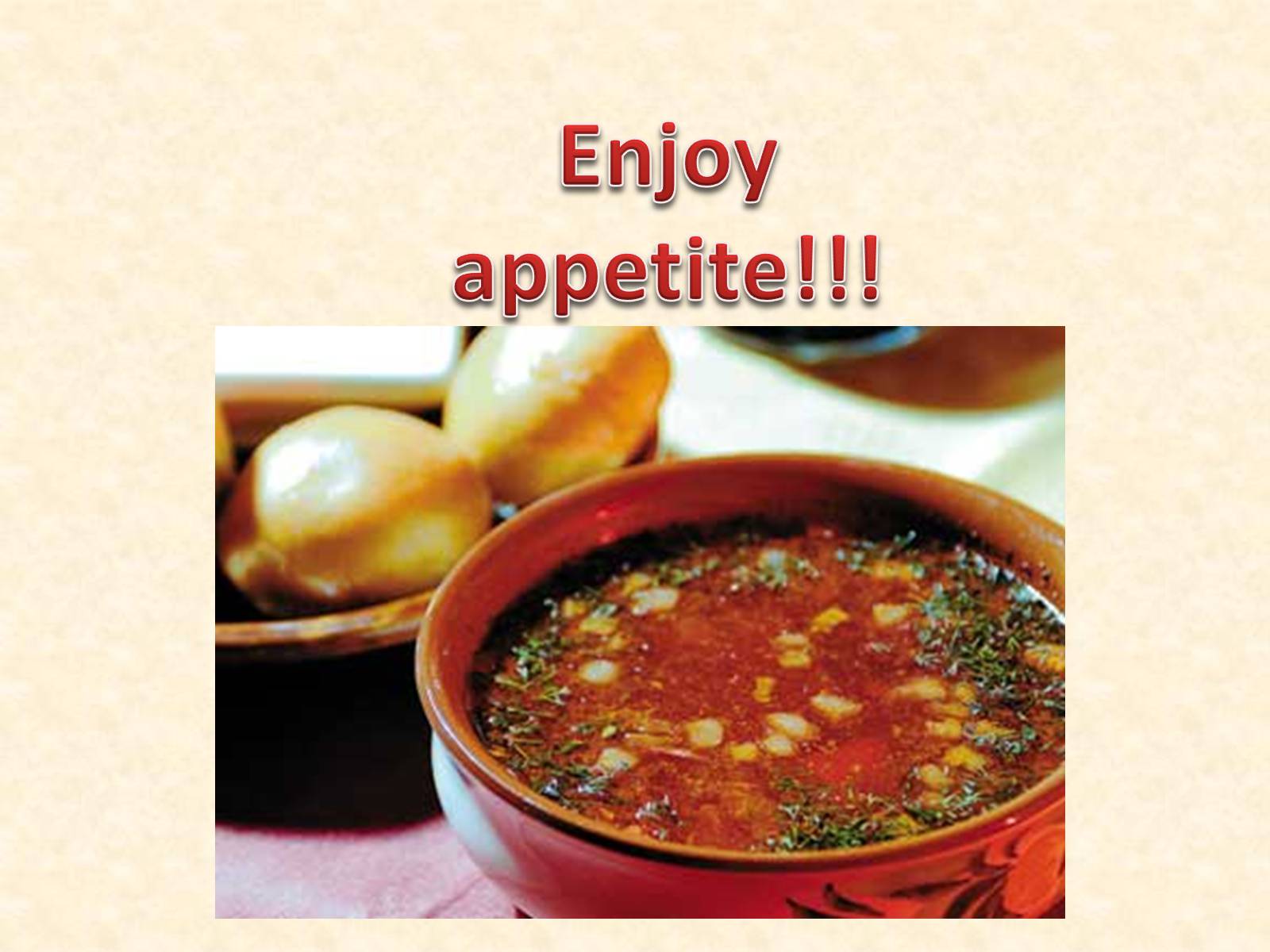
Enjoy
appetite!!!